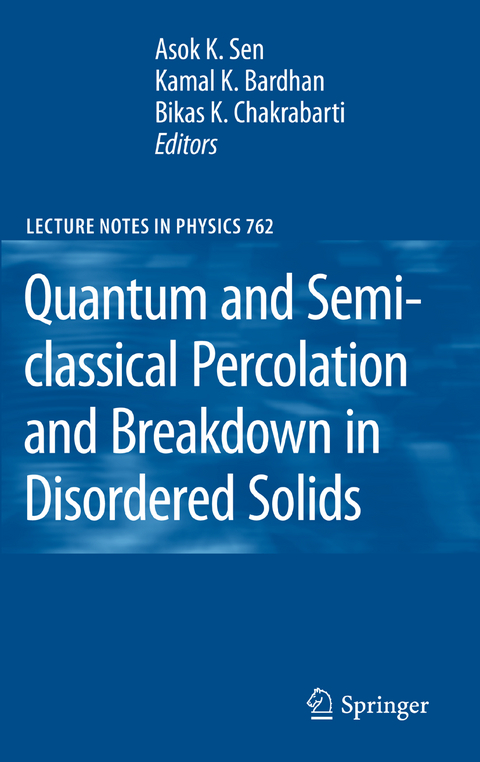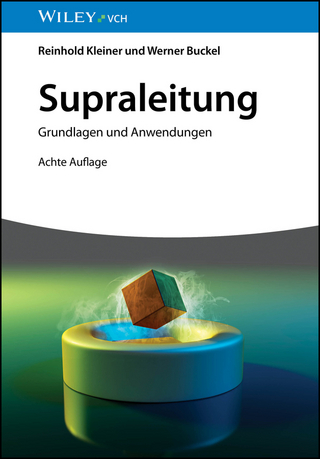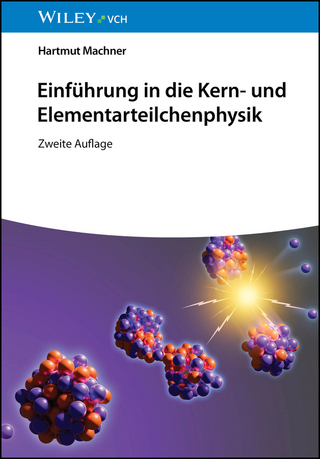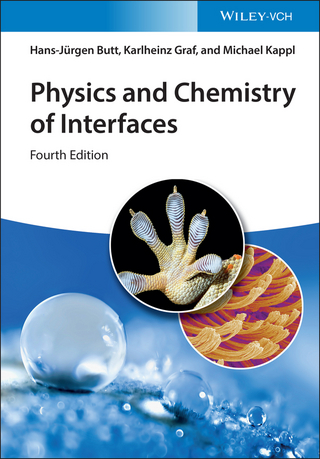
Quantum and Semi-classical Percolation and Breakdown in Disordered Solids
Seiten
2010
|
Softcover reprint of hardcover 1st ed. 2009
Springer Berlin (Verlag)
978-3-642-09911-3 (ISBN)
Springer Berlin (Verlag)
978-3-642-09911-3 (ISBN)
This book seeks to connect theoretical and experimental advances in quantum percolation methods applied to breakdown phenomena in composite materials. The final chapter explores the application of these methods to quantum computing and communication.
This lecture notes in physics volume mainly focuses on the semi classical and qu- tum aspects of percolation and breakdown in disordered, composite or granular s- tems. The main reason for this undertaking has been the fact that, of late, there have been a lot of (theoretical) work on quantum percolation, but there is not even a (single) published review on the topic (and, of course, no book). Also, there are many theoretical and experimental studies on the nonlinear current-voltage characteristics both away from, as well as one approaches, an electrical breakdown in composite materials. Some of the results are quite intriguing and may broadly be explained utilising a semi classical (if not, fully quantum mechanical) tunnelling between - cron or nano-sized metallic islands dispersed separated by thin insulating layers, or in other words, between the dangling ends of small percolation clusters. There have also been several (theoretical) studies of Zener breakdown in Mott or Anderson in- lators. Again, there is no review available, connecting them in any coherent fashion. A compendium volume connecting these experimental and theoretical studies should be unique and very timely, and hence this volume. The book is organised as follows. For completeness, we have started with a short and concise introduction on classical percolation. In the ?rst chapter, D. Stauffer reviews the scaling theory of classical percolation emphasizing (biased) diffusion, without any quantum effects. The next chapter by A. K.
This lecture notes in physics volume mainly focuses on the semi classical and qu- tum aspects of percolation and breakdown in disordered, composite or granular s- tems. The main reason for this undertaking has been the fact that, of late, there have been a lot of (theoretical) work on quantum percolation, but there is not even a (single) published review on the topic (and, of course, no book). Also, there are many theoretical and experimental studies on the nonlinear current-voltage characteristics both away from, as well as one approaches, an electrical breakdown in composite materials. Some of the results are quite intriguing and may broadly be explained utilising a semi classical (if not, fully quantum mechanical) tunnelling between - cron or nano-sized metallic islands dispersed separated by thin insulating layers, or in other words, between the dangling ends of small percolation clusters. There have also been several (theoretical) studies of Zener breakdown in Mott or Anderson in- lators. Again, there is no review available, connecting them in any coherent fashion. A compendium volume connecting these experimental and theoretical studies should be unique and very timely, and hence this volume. The book is organised as follows. For completeness, we have started with a short and concise introduction on classical percolation. In the ?rst chapter, D. Stauffer reviews the scaling theory of classical percolation emphasizing (biased) diffusion, without any quantum effects. The next chapter by A. K.
Classical Percolation.- Non-linear Response, Semi-Classical Percolation and Breakdown in the RRTN Model.- Quantum Transmittance Through Random Media.- Quantum Percolation in Two Dimensions.- Quantum Percolation in Disordered Structures.- Quantum Percolation in the Quantum Hall Regime.- Percolative Quantum Transport in Manganites.- Classical and quantum breakdown in disordered.- Nonequilibrium Quantum Breakdown in a Strongly Correlated Electron System.- Percolation in quantum computation and.
| Erscheint lt. Verlag | 22.10.2010 |
|---|---|
| Reihe/Serie | Lecture Notes in Physics |
| Zusatzinfo | XIV, 326 p. 155 illus. |
| Verlagsort | Berlin |
| Sprache | englisch |
| Maße | 155 x 235 mm |
| Gewicht | 512 g |
| Themenwelt | Naturwissenschaften ► Physik / Astronomie ► Atom- / Kern- / Molekularphysik |
| Naturwissenschaften ► Physik / Astronomie ► Festkörperphysik | |
| Naturwissenschaften ► Physik / Astronomie ► Thermodynamik | |
| Schlagworte | breakdown phenomena • Composite material • Disordered materials • Granular material • Quantum Computing • quantum percolation • Random Media |
| ISBN-10 | 3-642-09911-4 / 3642099114 |
| ISBN-13 | 978-3-642-09911-3 / 9783642099113 |
| Zustand | Neuware |
| Informationen gemäß Produktsicherheitsverordnung (GPSR) | |
| Haben Sie eine Frage zum Produkt? |
Mehr entdecken
aus dem Bereich
aus dem Bereich
Buch | Softcover (2024)
Wiley-VCH (Verlag)
59,90 €


